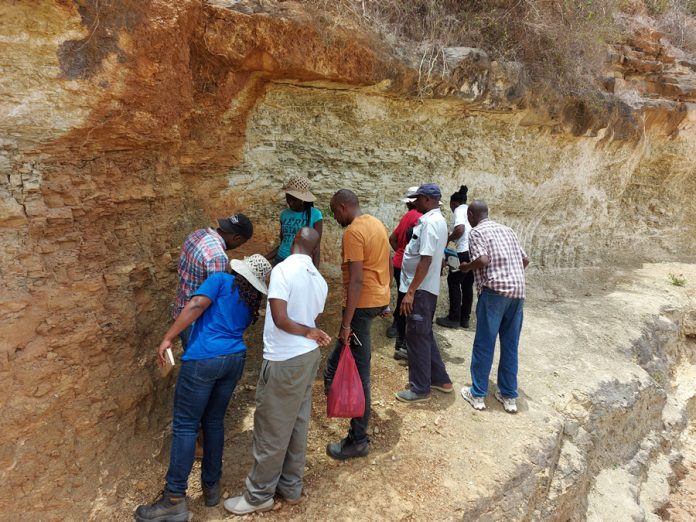List of Minerals in Kenya and Where They Are Mined
Kenya has attracted the attention of global players following the recent discoveries of world-class deposits of oil, coal, and other hydrocarbons.
The newly discovered oil deposits aside, Kenya has always been endowed with rich natural resources including soda ash, limestone, and salt.
The following are the minerals found in Kenya;
1. Rare Earth Metals
-
- Rare Earth elements/metals are a set of 17 metallic elements that include scandium and yttrium.
- Mrima Hill in Kwale County is among the world’s 5 richest deposits of Rare Earth Metals.
- The South Coast is a mineral-rich region in Kenya that also has gemstones.
- Rare Earth Metals are used to manufacture technological devices such as mobile phones, computer hard drives, and flat-screen monitors, among other valuables.
2. Gold
-
- Kilimapesa Gold Mine was the first constructed goldmine in Kenya.
- Situated in Narok County, the mine lies on the Migori Archaean Greenstone Belt in the southwestern part of Kenya.
- Gold ore is mined at this shallow underground site and exported for refining.
- Gold mining is also done in remote rural areas around Lake Victoria, especially in Siaya and Migori Counties.
Also read: 5 Best National Parks and Reserves in Kenya
3. Soda Ash
-
- Soda Ash which is sodium carbonate (Na2CO3) is naturally available and mined at Lake Magadi in Kenya.
- Soda Ash’s greatest application is in the manufacture of glass.
- Soda Ash is also used to soften water as well as clean the air.
- Tata Chemicals Magadi Limited (formerly Magadi Soda Company) conducts the mining operations at Lake Magadi.
- Established in 1911, the company is Africa’s largest Soda Ash manufacturer and also one of the leading exporters in Kenya.
4. The Taita – Kwale Gemstone Belt
-
- Kenya’s south coast is designated as one of the richest mineral deposits in the country.
- Apart from Rare Earth elements, Kwale and Taita Taveta counties are home to highly valuable gemstones.
- The gemstones are found in the following forms;
-
- Tsavorite
- Sapphire
- Ruby
- Green garnet
- Red garnet
- Spinel, among others.
-
- Construction and equipping of a Gemstone Value Addition Facility are underway to boost low revenues from the export of raw stones.
5. Granite
-
- The Ministry of Petroleum and Mining has designated Vihiga County as rich reservoir of Granite.
- Due to the low exploitation, Kenya is importing granite slabs to meet the local demand.
- A Granite Processing Plant is being set up to facilitate the full exploitation of the mineral in Vihiga.
6. Petroleum
-
- Kenya has witnessed sustained exploration of oil and natural gas deposits since 1956.
- The exploration yielded results in 2012 when oil was discovered at the Ngamia Well within the Lokichar Basin in Turkana County.
- The exploration has also identified 9 hydrocarbon deposits in Turkana County and 3 others off the Kenyan Coast in Lamu.
- More than 70 wells have so far been drilled in Kenya.
- Kenya officially became an oil exporter in August 2019 when the first consignment of 200,000 barrels left the port of Mombasa.
- The low sulphur crude was mined from Kenya’s oil fields located in Turkana County.
7. Soapstone
-
- The African Soapstone or Kisii Soapstone is mined at Tabaka Hills in Kisii County.
- The mining activities in this southwestern part of Kenya are not reliant on machinery.
- While soapstone is available in other parts of the globe, the Kisii deposits offer a wide variety and different colors.
- Soapstone is used to make carvings, vessels, and home decorations.
- The locals use simple tools such as shovels, hammers, and files to mine and make carvings out of soapstone.

8. Fluorspar
-
- Fluorspar is a mineral found in Kimwarer, Keiyo sub-county inside the Kerio Valley Basin.
- Fluorspar mining had been carried out for 50 years before grinding to a halt in 2016.
- Kenya Fluorspar Company was the single company that had operations in the fluorspar fields in Kimwarer.
- The company folded in 2016 citing a prolonged drop in global prices of the mineral.
- Fluorspar still exists in the now abandoned fields in Kerio Valley.
9. Salt
-
- Gongoni is a township on the Kenyan Coast known for its salt works that have salt evaporation ponds.
- Krystalline Salt Limited (Kaysalt) is a leading salt producer and exporter that operates from the area, just 20 kilometers north of Malindi town.
- The Gongoni Salt Works has salt works, a refinery, and a packaging facility.
- The salt is then sold in Kenya, Uganda, Rwanda, South Sudan, North Malawi, and other countries in Eastern Africa.
- Table salt is added to food to make it tasty and more palatable.
10. Limestone
-
- Limestone is a mineral mined at Athi River near Nairobi and at Bamburi Mombasa.
- Limestone’s main product is cement which feeds the booming Kenyan construction sector.
- Limestone deposits in Mombasa occur as remains of coral reefs which are a phenomenon occasioned by the Indian Ocean.
- Large limestone rocks are excavated using the open cast method before getting crushed by heavy machinery.
- Limestones are then transported to various cement plants in Kenya including Athi River and Bamburi Cement Factory.
11. Titanium
-
- The Kwale Operation is a high-value extraction of Titanium 50 kilometers south of Mombasa.
- Base Titanium is the company in charge of the mining operations in Kwale, just 10 kilometers from the Indian Ocean shores.
- The titanium ore is mined using the hydraulic method that involves blasting the ore directly with high-pressure water jets.
- The Titanium mining operation in Kwale is designated as a Vision 2030 flagship project.
- Titanium is used in the making of;
-
- Bicycle frames
- Tennis rackets
- Laptops
- Mobile phones
- Surgical tools
-
12. Coal
-
- The Mui Coal Basin in Kitui County has approximately 400 million tonnes of coal deposits.
- The rich mineral deposit has, however, thrown the country into a dilemma.
- The positive economic prospects for exports demand immediate exploitation of the mineral.
- Prevailing climate change politics, however, are the biggest obstacle to the exploitation of Kitui’s coal.
- Kenya prides itself as a leader in climate change in the region, as the world transitions to clean renewable energy.
- Coal is considered a dirty kind of energy that is an environmental polluter and it could escalate global warming.
- As Kenya ravels in this precarious situation, coal mining is also running into headwinds following the award of mining concessions to a Chinese firm.
13. Diatomite
-
- Diatomite is a mineral that is mined at Kariandusi in Nakuru County, as well as other deposits in Baringo County.
- Diatomite production in Kenya has been on a steady rise since 2013 and more sites are being explored.
- The mineral is applied in the following areas;
-
- Filtration of domestic and industrial water
- Making of paint
- Insulation of water pipes
- Insulation of walls
-
14. Iron ore
-
- Kenya has an abundance of iron ore spread in deposits across the country.
- Ikutha and Marimanti (Tharaka Nithi County) as well as Samia in Siaya are iron ore sites in Kenya.
- A geological survey carried out by Tsavo Minerals Organisation identified more deposits in Taita Taveta county.
- Iron ore deposits exist in the Manyatta area in Taita Taveta County in southern Kenya.
- The discovery of iron ore is a concrete step toward the setting up of a steel-smelting plant in Kenya.
Also read: List of Marine National Parks in Kenya And Their Locations
15. Copper
-
- Embu County is set to reap high revenues following the discovery of copper deposits.
- Plans were kickstarted in 2018 for large-scale mining in Mbeere.
- Elsewhere in Migori, the Old Macalder Copper mine in Nyatike Sub-county was closed in 2019.
- The government halted operations due to the unlicensed mining operations that were ongoing on site.
- Copper is a good electrical conductor and is used in making power equipment such as electricity transmission cables.
16. Graphite
-
- Crystalline graphite deposits are found at Chawia Mines in Taita Taveta County.
- Graphite ores in Kenya are found along the Mozambique belt and it is extracted through the open pit method.
- Other areas with graphite in Kenya include;
-
- Kamstoi
- Kanziku
- Tsavo
-
- With China as the leading producer of crystalline graphite, global demand has been on the rise.
- Graphite is used in the making of;
-
- Batteries
- Pencils
- Nuclear reactors
- Lubricants
-
The list is subject to updates. More to Follow.

























